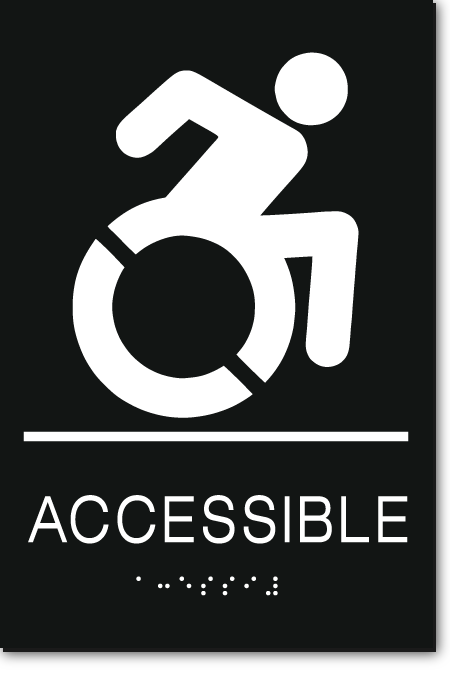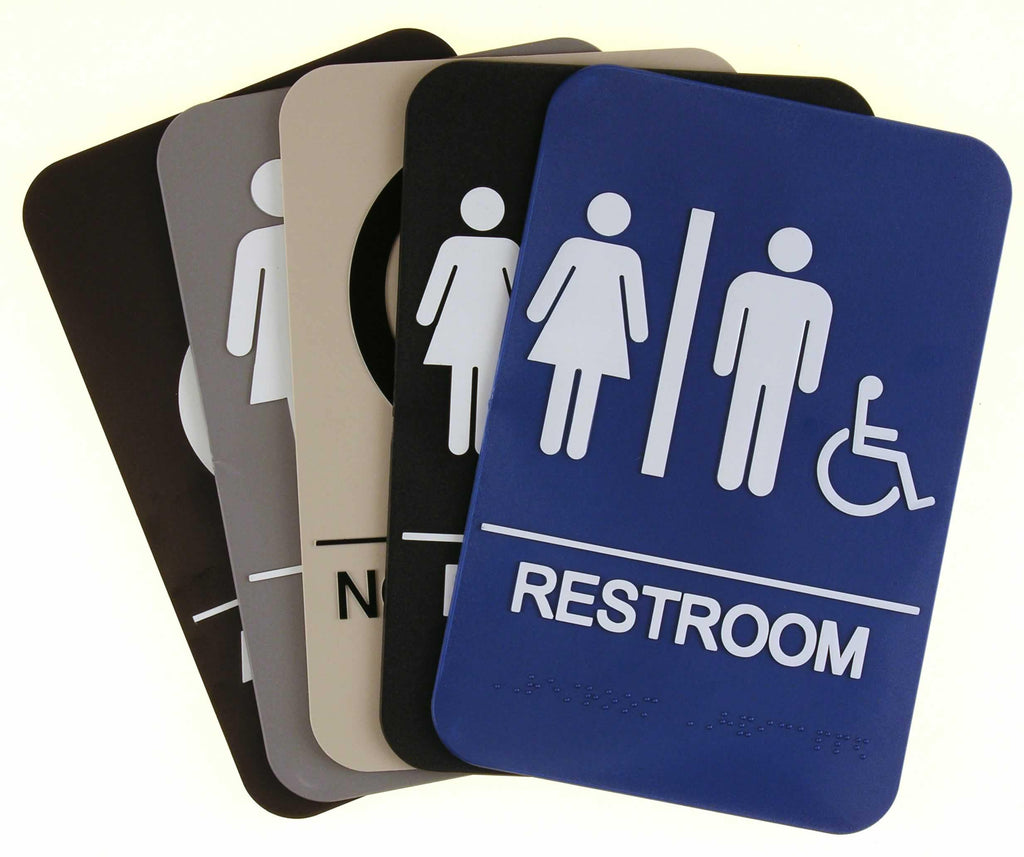Comprehending the Rules Behind ADA Signs
Comprehending the Rules Behind ADA Signs
Blog Article
Exploring the Secret Functions of ADA Signs for Boosted Access
In the realm of accessibility, ADA signs offer as quiet yet effective allies, making certain that spaces are accessible and comprehensive for people with impairments. By incorporating Braille and responsive aspects, these indications damage obstacles for the aesthetically impaired, while high-contrast shade schemes and legible font styles cater to varied aesthetic requirements.
Importance of ADA Conformity
Ensuring conformity with the Americans with Disabilities Act (ADA) is critical for fostering inclusivity and equal access in public rooms and work environments. The ADA, enacted in 1990, mandates that all public centers, employers, and transportation solutions accommodate individuals with impairments, ensuring they appreciate the very same rights and possibilities as others. Conformity with ADA criteria not just meets legal obligations yet likewise improves a company's online reputation by showing its commitment to variety and inclusivity.
One of the vital facets of ADA compliance is the implementation of easily accessible signage. ADA indicators are created to guarantee that people with handicaps can easily navigate through spaces and buildings. These signs should comply with particular guidelines concerning dimension, font, color contrast, and placement to assure visibility and readability for all. Appropriately implemented ADA signage aids remove obstacles that people with disabilities frequently experience, thus advertising their self-reliance and confidence (ADA Signs).
Moreover, adhering to ADA policies can reduce the risk of lawful consequences and potential penalties. Organizations that fall short to abide with ADA standards may deal with suits or charges, which can be both destructive and economically burdensome to their public photo. Hence, ADA compliance is important to cultivating an equitable environment for everyone.
Braille and Tactile Elements
The consolidation of Braille and tactile elements right into ADA signs symbolizes the principles of accessibility and inclusivity. It is generally placed under the corresponding message on signage to guarantee that individuals can access the information without aesthetic aid.
Responsive aspects expand beyond Braille and include increased signs and characters. These components are developed to be noticeable by touch, enabling individuals to determine room numbers, restrooms, leaves, and various other important areas. The ADA establishes particular guidelines regarding the size, spacing, and placement of these tactile elements to maximize readability and make sure consistency throughout various environments.

High-Contrast Color Design
High-contrast color design play a critical duty in enhancing the exposure and readability of ADA signage for people with visual disabilities. These schemes are essential as they optimize the distinction in light reflectance between text and background, making certain that signs are easily discernible, also from a distance. The Americans with Disabilities Act (ADA) mandates the use of specific shade contrasts to fit those with restricted vision, making it a crucial facet of compliance.
The efficacy of high-contrast shades lies in their capability to stand out in numerous lights problems, consisting of dimly lit settings and areas with glow. Generally, dark text on a light history or light message on a dark history is utilized to accomplish optimal contrast. For instance, black text on a white or yellow background gives a stark visual difference that helps in fast acknowledgment and understanding.

Legible Fonts and Text Dimension
When taking into consideration the style of ADA signage, the selection of clear fonts and suitable message size can not be overstated. These aspects are crucial for ensuring that indications come to individuals with visual problems. The Americans with Disabilities Act (ADA) mandates that fonts have to be sans-serif and not italic, oblique, manuscript, highly attractive, or of uncommon form. These needs aid make certain that the text is easily legible from a distance and that the personalities are distinct to diverse target markets.
The dimension of the message also plays a pivotal duty in go to my site accessibility. According to ADA guidelines, the minimal text elevation need to be 5/8 inch, and it must raise proportionally with watching distance. This is particularly essential in public areas where signage demands to be checked out quickly and precisely. Consistency in message dimension adds to a natural aesthetic experience, helping individuals in browsing settings effectively.
In addition, spacing between lines and letters is integral to readability. Sufficient spacing protects against characters from appearing crowded, improving readability. By adhering to these requirements, designers can substantially improve accessibility, ensuring that signs serves its desired objective try this web-site for all people, no matter of their aesthetic capacities.
Effective Positioning Strategies
Strategic placement of ADA signage is important for maximizing ease of access and making certain compliance with lawful criteria. ADA standards stipulate that signs should be installed at a height in between 48 to 60 inches from the ground to guarantee they are within the line of view for both standing and seated individuals.
Additionally, signs need to be put nearby to the latch side of doors to allow easy identification before entrance. Uniformity in sign positioning throughout a center boosts predictability, decreasing complication and improving total user experience.

Conclusion
ADA signs play an essential role in promoting access by integrating functions that address the demands of people with disabilities. Including Braille and responsive aspects makes sure crucial details is easily accessible to the aesthetically impaired, while high-contrast color pattern and understandable sans-serif fonts enhance this link visibility across numerous illumination problems. Efficient positioning methods, such as suitable installing heights and tactical places, further facilitate navigation. These elements collectively cultivate an inclusive environment, underscoring the value of ADA conformity in ensuring equal access for all.
In the world of availability, ADA signs offer as quiet yet powerful allies, making sure that areas are accessible and inclusive for people with disabilities. The ADA, enacted in 1990, mandates that all public centers, employers, and transportation services suit individuals with specials needs, ensuring they delight in the same civil liberties and opportunities as others. ADA Signs. ADA indicators are made to guarantee that people with handicaps can conveniently browse through structures and areas. ADA standards specify that indicators should be installed at a height between 48 to 60 inches from the ground to ensure they are within the line of sight for both standing and seated people.ADA signs play a crucial duty in advertising availability by incorporating features that attend to the needs of individuals with disabilities
Report this page